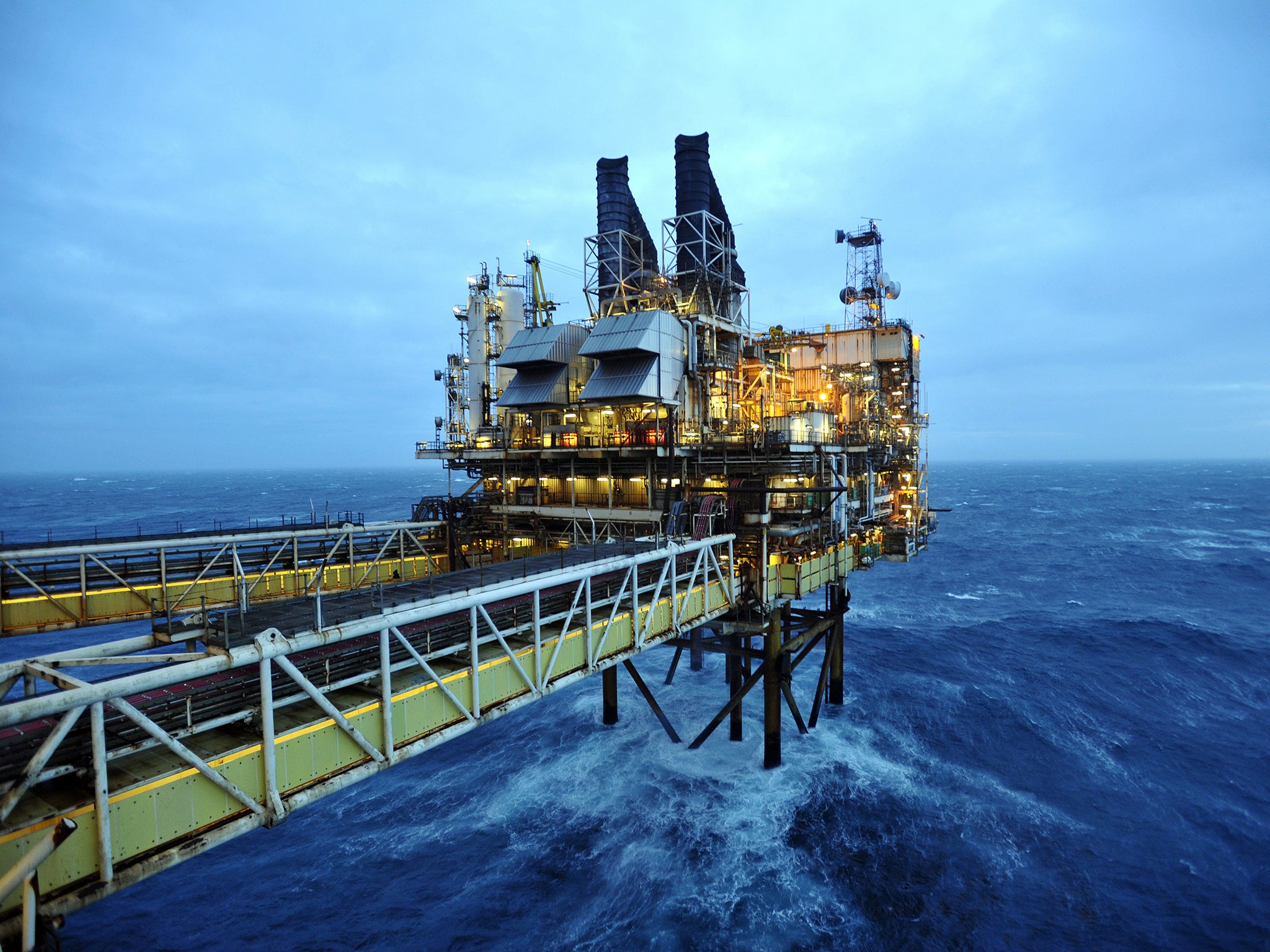Eat shale, Iran! Frack off, Putin! It’s the era of cheap oil, but will it last?
This week’s utopian dreams of cheap fuel forever seem unlikely to be realised


On the “isle of happiness”, the palaces of art are rising from the sands. A short drive across the bridge from the skyscrapers of downtown Abu Dhabi, huge construction sites and even a workers’ village mark the emergent “cultural quarter” of Saadiyat Island.
Within a few years, these dusty prairies will fulfil the Gulf emirate’s masterplan for artistic infrastructure. The island aims to take a place among the world’s top cultural destinations. At the Manarat al-Saadiyat – the “beacon” building for the scheme, which even in 2008 carried a price tag of $27bn (£18bn) – visitors can view taster exhibitions from the lavish collections of the museums due to adorn this offshore tract. Last May, I caught a UAE-friendly version of the British Museum’s History of the World in 100 Objects there. The Louvre Abu Dhabi, first in a planned handful of five new institutions designed by celebrity “starchitects”, has fixed a launch date of December 2015.
Also on Saadiyat – amid controversy over the wretched plight of many expat labourers – New York University has just inaugurated an Abu Dhabi campus. When I last visited, Cranleigh public school was holding an open day for its new-built Saadiyat outpost: a far cry from Surrey.
As it happens, Abu Dhabi is the one emirate that still has plenty of oil in the ground: almost 100 billion barrels, official figures claim. Dubai, its brasher little brother, became a net importer years ago. Even so, the senior emirate has long since planned its exit routes from the petroleum era.
During 2013, the “information and communication” sector grew by 15.3 per cent in an economy that earns almost 50 per cent of GDP from non-hydrocarbon sources; for the whole UAE, thanks to post-oil Dubai, the figure comes closer to 70 per cent. In a nicely ironic twist for people who remember those cartoons of “oil sheikhs” wielding pump-handles like guns, Abu Dhabi is also developing a green research hub for renewable energy: Masdar City.
In other Gulf states, a similar thrust to move “beyond petroleum” accelerates. Sadly, political pluralism in these paternalistic monarchies has not yet caught up with economic diversification, even if they avoid the outright barbarism of their blogger-flogging Saudi neighbours. It should, and soon. For all its acute democratic deficits, the region does offer a showcase for innovations that can replace the broken model of the “rentier” state, in which oil and gas flowed at steep rates towards a world ever-hungrier for fossil fuels. The oil price peaked in 2008 at $147 per barrel. As I write, it hovers around $48: down from the $110 or so that, until mid-2014, looked stable enough for the SNP to borrow as the basis of its budget for an independent Scotland. Perhaps Alex Salmond ought to have taken a fact-finding trip to the post-oil projects of the Gulf.
Kenneth Rogoff, the influential Harvard economist, not only calls the plummeting cost of oil the “big story” for 2015, but a “once-in-a-generation shock”. Here in the consuming countries, that shock so far feels like a gift. Along with near-zero inflation and cheaper transport, the benefits of the US shale boom and Opec’s Saudi-led refusal to cut production include the discomfiture of almost every painful thorn in Western sides. Speaking in triumphalist tones, the foreign-policy guru Edward Luttwak argues that the collapse in crude “is knocking down America’s principal opponents without us even trying.” Eat shale, Iran! Frack off, Putin! The “axis of oil” is on the skids.
Even minor irritants such as radical Venezuela now have to chew on crude-drenched humble pie. Caracas has curtailed the “Petrocaribe” programme that sends influence-building cheap oil to its resource-poor neighbours in return for token “payments” that may – I jest not – take the form of Caribbean rice and beans. Some observers see the US-Cuba deal in December as an early sign of the gains that accrue when troublesome oil states have to turn off the tap to local allies. Fast-dwindling hydrocarbon revenues will leave some politically sensitive budgets for 2015 in tatters. Reportedly, Russian economic policy rests on the assumption of oil at $95 per barrel; more cautious, Iran has planned for a rate of $72. If neither come close to an SNP level of blithe confidence, both represent dangerous overshoots. Yet exultant Western policy-makers must be careful what they wish for.
Rather than meek surrender over nuclear plants, Syria or Ukraine, the imminence of economic meltdown could trigger desperate measures from Moscow or Tehran. The Bank of England’s Financial Policy Committee warns that sustained cheap oil has “the potential to reinforce certain geopolitical risks”. Look further afield: to Nigeria, for instance, dependent on oil for more than 90 per cent of its foreign earnings. More prudent than Putin’s, its own 2015 budget reckons on an oil price of $65. Do Washington, London and Brussels welcome the prospect of a severely weakened Nigerian state at the time when it has to confront, in Boko Haram, a rampant army of fanatics?
Global menaces aside, anxious environmentalists fear that cheap crude will send the vision of a cleaner planet up in tarry, belching smoke. Incentives to eco-virtue have already diminished. Last month, US sales of gas-guzzling SUVs rose by 90 per cent compared to the previous year. Fracking technology, which will continue to develop despite the short-term losses to “unconventional oil” that the low price brings, still causes concern. Drilling and extraction in West Sussex will have to look very different to the customs of West Texas.
On the global map, would oil at, say, $40 per barrel trace a new reality? Some projections envisage a long-term shift in the balance of power as nations and regions so far shackled by their dearth of indigenous resources speed ahead. One $40 scenario has the Philippines growing at over 7 per cent annually: a thriller for Manila. As a whole, oil-poor Asia rises – or rather, resumes its swift ascent.
We don’t know the future but we can study the past. The oil spikes of 1973-74, then 1979-80, set the political and psychological tone for a generation. After what the French call les trente glorieuses – the 30 glory years of post-war Western growth – came a protracted hangover. Between October 1973 and March 1974, the Opec cartel – much more powerful then than now – pushed the cost of a barrel up from $3 to $12. Four decades of inflation muffle the impact of that cataclysmic shift.
Imagine that, instead of dropping sharply, the oil price had since June 2014 gushed from $110 to around $450. “Panic” would hardly do justice to the outcomes. In Britain, after the initial hike, we saw a government fall (Ted Heath’s), two elections within a year (1974) and the end of the post-1945 social consensus. Other consequences may have taken years to reach fruition. Massively enriched but still insecure, the Saudi elite sought to buy peace at home and clout abroad via the propagation and export of its brand of sectarian fundamentalism – no expense spared. So there might be a historic link between the two dominant topics of January 2015.
The black stuff not only made history but altered how we thought about it. In the wake of the 1970s shocks, the fight for fuel could explain almost everything. You might call this petro-determinism – or even (sorry) crude materialism. Politics, strategy, faith and ideology all sat in the back seat. Oil drove history. Many opponents of the 2003 Iraq War have never deviated from that belief.
On a separate front, historians who dissect the corpse of the Soviet empire sometimes find it smeared in petroleum. In this perspective, the USSR’s failure to fuel both its own economy and its satellites’ was a crucial accelerant of change: oil production fell at an annual rate of 9 per cent after 1988. According to the oil specialist Doug Reynolds, of the University of Alaska, this decline amounts to a third, Warsaw Pact-specific shock. It acted as “the final and decisive push that broke up the Soviet Union and dismantled the Soviet Communist Party”.
This week’s utopian – or dystopian – dreams of cheap fuel forever may well not come to pass. Yesterday, the International Energy Agency predicted an upswing. “A price recovery – barring any major disruption – may not be imminent, but signs are mounting that the tide will turn,” it said. Even so, the battle for market hegemony that has pitched the Saudi Oil Minister Ali al-Naimi against the upstart frackers of America will echo far into the future. In the past few days, BP has cut its North Sea workforce by 300, Shell has quit the al-Karaana petrochemicals project in Qatar while, 5,000 miles away, Norway’s Statoil has handed back three oil exploration licences in Greenland.
In this light, those grandiose galleries ascending from the sands of Saadiyat Island as prestigious symbols of a future beyond oil look more like prudence than extravagance. Not far away, the eco-city of Masdar – with its 50-acre field of 87,777 solar panels – bears early witness to the Abu Dhabi take on environmental sustainability, known as “estidama”. A single architectural practice lies behind both Masdar and the Zayed National Museum, one of the showpieces on Saadiyat: Foster + Partners. Whatever happens to the price of crude this year, one message will endure. Sell oil; buy green development.

Join our commenting forum
Join thought-provoking conversations, follow other Independent readers and see their replies